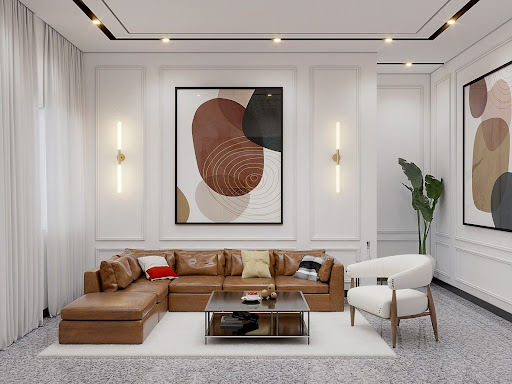Home Improvement
Custom Home Design: Key Insights for Designing a Personalized Living Space You’ll Adore

In today’s fast-paced world, our homes serve as sanctuaries where we seek comfort, relaxation, and inspiration. Designing a custom living space tailored to your unique preferences and lifestyle can significantly enhance your daily life. Whether you’re building a new home or renovating an existing one, embarking on a custom home design journey opens up endless possibilities to create a space you’ll love for years to come.
Understanding Your Needs and Lifestyle
Before diving into the design process, take some time to reflect on your needs, preferences, and daily routines. Consider how you utilize each space in your current home and identify areas that could be improved. Whether you’re a budding chef who dreams of a gourmet kitchen or a bookworm in need of a cozy reading nook, understanding your lifestyle will guide the design decisions.
Setting Your Budget
Creating a realistic budget is essential for a successful custom home design project. Determine how much you’re willing to invest in your dream home and allocate funds for different aspects such as construction, materials, and furnishings. Remember to factor in unexpected expenses and set aside a contingency fund to handle any unforeseen challenges that may arise during the project.
Finding Inspiration
Gather inspiration from various sources such as home design magazines, websites, and social media platforms like Pinterest and Instagram. Explore different architectural styles, color schemes, and interior design trends to identify elements that resonate with your vision. Don’t hesitate to create mood boards or vision boards to visualize your ideas and preferences.
Choosing the Right Professionals
Collaborating with experienced professionals is crucial for bringing your vision to life. Hire an architect or designer who understands your aesthetic preferences and has a track record of delivering exceptional results. Additionally, choose contractors and craftsmen who are skilled, reliable, and committed to quality craftsmanship.
Creating a Functional Layout
Focus on designing a layout that promotes functionality and flow throughout your home. Consider how each space will be used and ensure that traffic patterns are logical and efficient. Maximize natural light and views, and allocate sufficient space for essential activities while avoiding unnecessary clutter.
Selecting Materials and Finishes
Carefully select materials and finishes that not only enhance the aesthetics of your home but also meet your practical needs. Consider factors such as durability, maintenance requirements, and sustainability when choosing flooring, countertops, cabinetry, and other finishes. Aim for a cohesive look that reflects your personal style and complements the overall design scheme.
Incorporating Personal Touches
Infuse your personality into every aspect of your home design by incorporating unique touches and custom features. Whether it’s a built-in window seat overlooking the garden or a statement-making light fixture in the foyer, adding personal touches will make your home feel truly one-of-a-kind. Don’t be afraid to get creative and think outside the box to make your home uniquely yours.
Optimizing Energy Efficiency
Incorporating energy-efficient design elements not only reduces your carbon footprint but also saves you money on utility bills in the long run. Consider features such as high-performance insulation, energy-efficient windows and doors, and solar panels to minimize energy consumption and maximize comfort. Sustainable design practices not only benefit the environment but also contribute to a healthier and more comfortable living environment for you and your family.
Ensuring Comfort and Convenience
Prioritize comfort and convenience in every aspect of your home design. Invest in quality furnishings and ergonomic furniture that promote relaxation and well-being. Integrate smart home technology to automate tasks and enhance convenience, whether it’s controlling lighting, temperature, or security systems with the touch of a button.
Planning for Future Needs
Anticipate future lifestyle changes and plan your home design accordingly. Whether you’re starting a family, welcoming aging parents, or pursuing a new hobby, design your home to accommodate evolving needs and preferences. Incorporate flexible and adaptable spaces that can easily be repurposed or modified as your life circumstances change.
Reviewing and Revising the Design
Seek feedback from professionals, friends, and family members throughout the design process. Be open to constructive criticism and be willing to make adjustments to the design as needed. Remember that designing your dream home is a collaborative effort, and incorporating diverse perspectives will lead to a more thoughtful and well-rounded design.
Managing the Construction Process
Stay actively involved in the construction process to ensure that your vision is being realized according to plan. Communicate regularly with contractors and suppliers to address any concerns or issues that may arise. Keep track of the construction timeline and budget to avoid delays and cost overruns, and be prepared to make decisions promptly to keep the project on track.
Adding Final Touches
As your custom home nears completion, focus on adding the finishing touches that will make it feel like home. Style and accessorize each space to reflect your personality and enhance the overall ambiance. Pay attention to details such as artwork, textiles, and decorative accents to create a cohesive and inviting atmosphere that you’ll love coming home to.
Conclusion
Designing a custom living space is an exciting and rewarding endeavor that allows you to create a home that truly reflects your personality, preferences, and lifestyle. By following these essential tips and guidelines, you can embark on your custom home design journey with confidence and create a space that brings joy and inspiration to your daily life.

